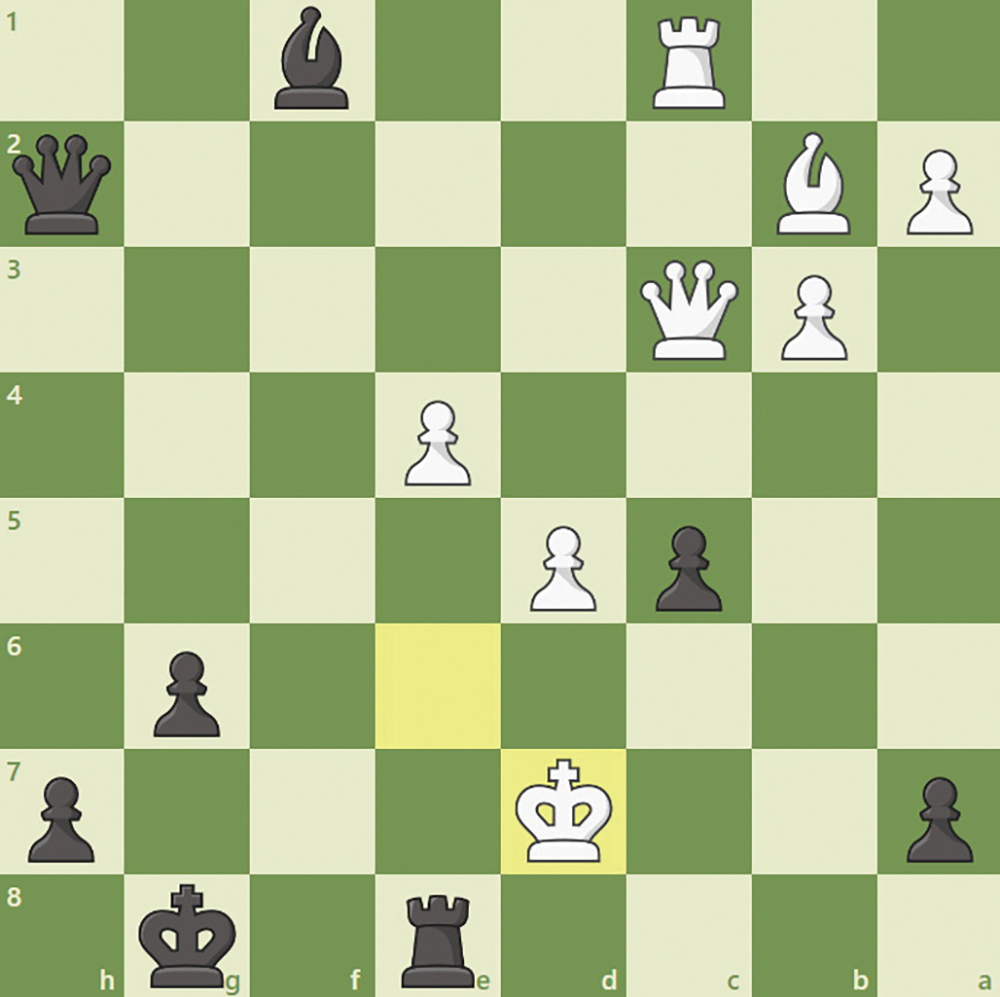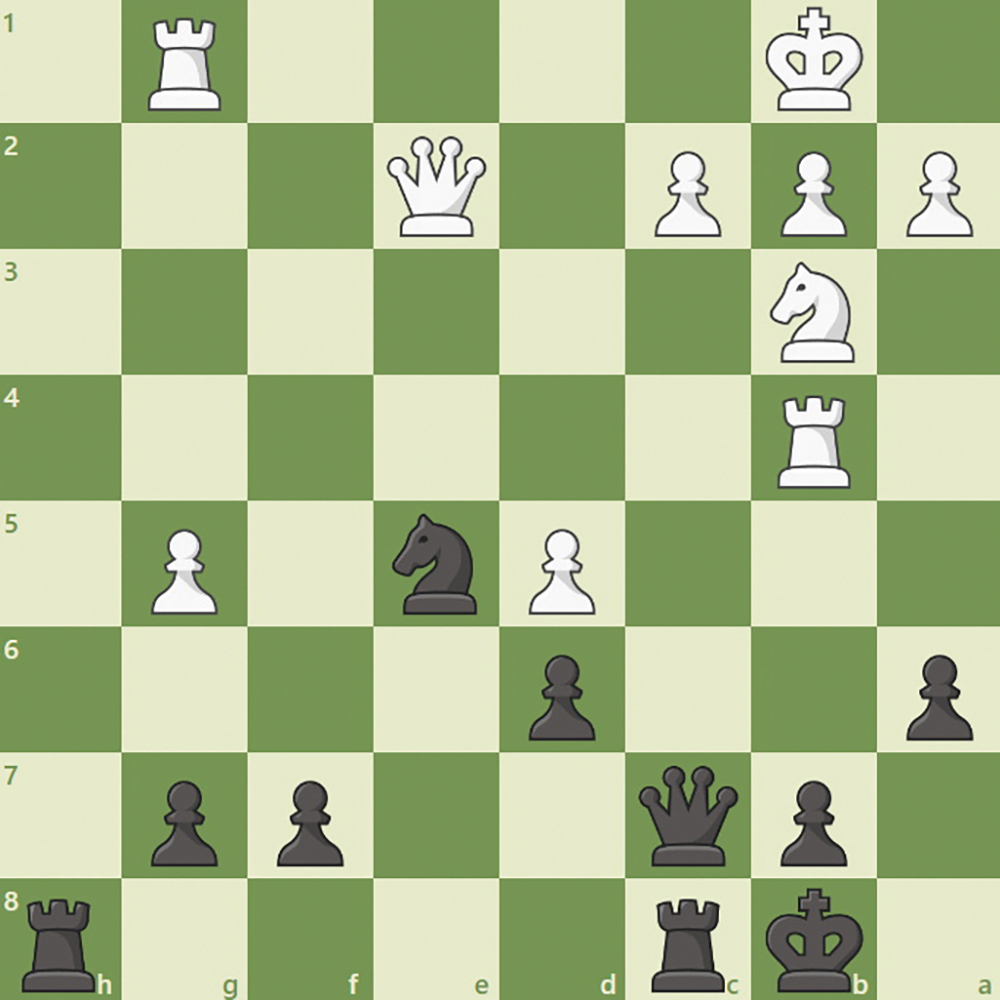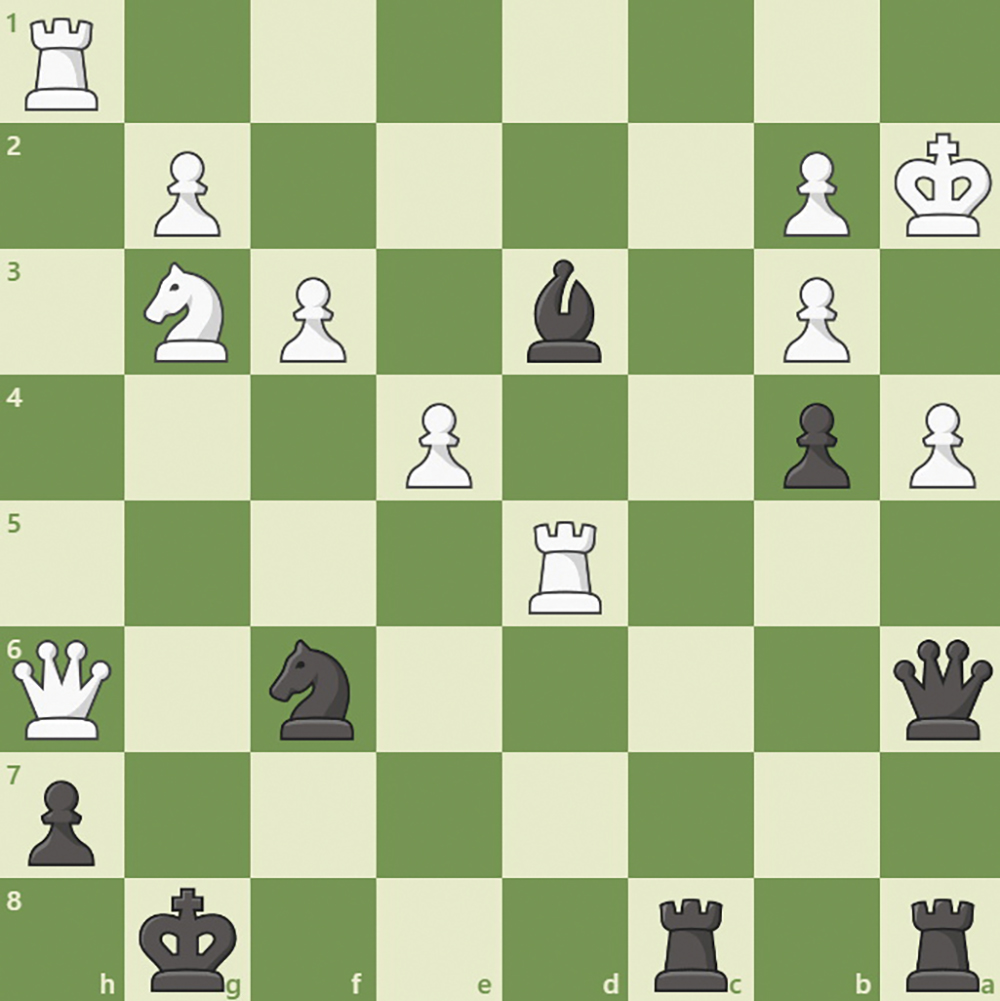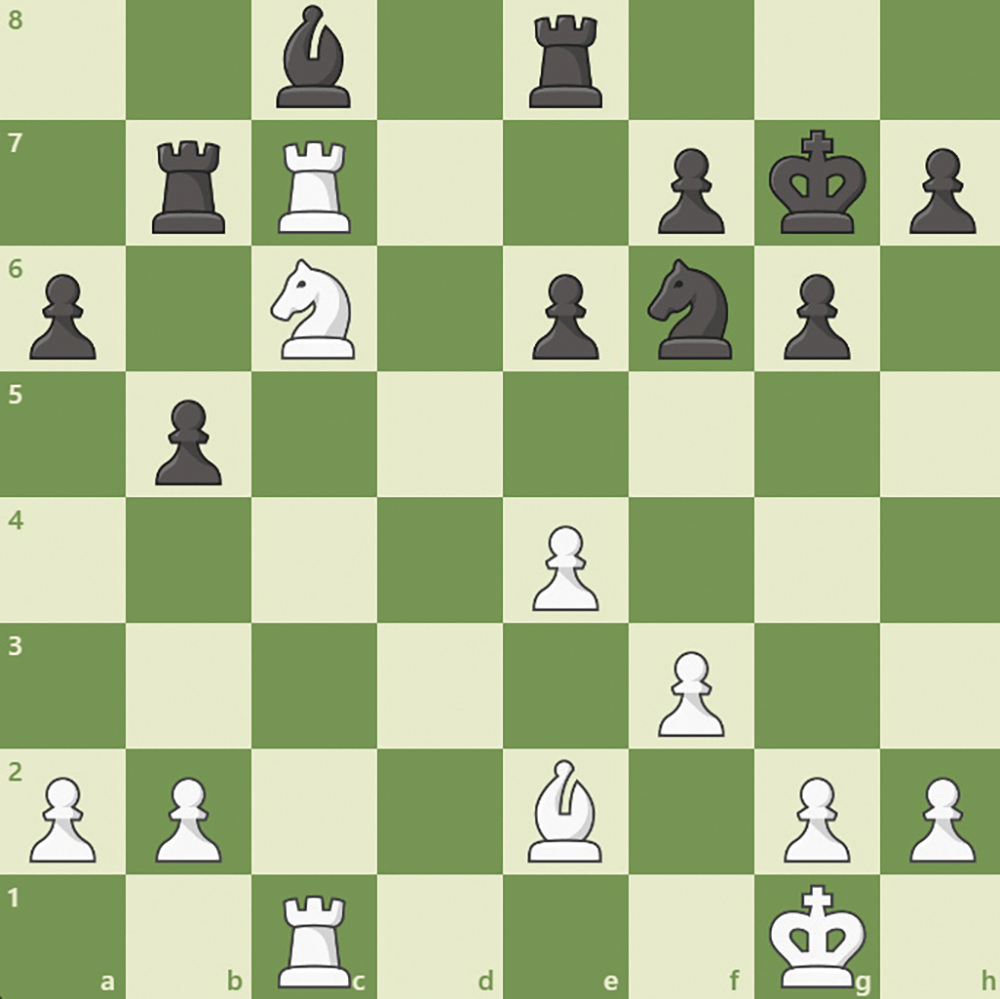In chess, an X-ray is a move so that a piece defends or controls a square through an interceding piece, typically to defend a piece through the opponent’s piece or indirectly attack the opponent.

This concept is evident in the position shown in Figure 1, a position from a 1914 game between
Aron Nimzowitsch and Siegbert Tarrasch, where the white king is stranded on the opposite side of the board with the black queen and rook covering most of the squares around the king.
Normally, black would have to either defend the rook or move it to safety as the king is attacking it. However, black has the move Bishop to b5, a checkmate in one that both checks the king while also X-ray defending the rook through the king.

Figure 2 is a position from a game played in the 1988 Reykjavik Open between Grandmasters Jonothan Tisdall with white and Judit Polgar, the strongest female chess player of all time, with black.
Polgar began with 1 … Ka8, moving her king to safety and unpinning the b7 pawn so the white queen can’t take on a6. 2. a4 Rh3 3. Re4 Rch8 and both players activate their rooks to apply pressure on the other’s position, each preparing to launch an attack. And both players strike immediately with 4. a5 Rh2 5. Rg2, defending the queen and offering a trade of rooks that would neutralize the strength of black’s doubled rooks on the h file. Therefore, Polgar declined the trade, instead continuing her assault with 5 … Rh1+ 6. Kh2. Qd7, applying pressure on the weak light squares around Tisdall’s king and threatening checkmate if the e4 rook moves off of the 4th rank. 7. Nd2, rerouting the knight to open up more kingside space and aiming to trade off black’s powerful e5 knight. 7 … R8h4 and black offers a rook trade on her terms to remove white’s guard of the 4th rank. Here, it is best for white to simply trade rooks and play (9. Qf2), so that after (9 … Qa4+ 10. Kb1 Rh1+), white can defend with (11. Rg1). However, instead of trading rooks, white blundered with 8. Nf3, a natural move that hits both the rook on h4 and the knight on e5. What Tisdall missed was that after 8 … Nxf3 9. Qxf3 R1h3 10. Qe2, black has the incredible winning X-ray tactic: 10 … Qa4+, sacrificing the queen for checkmate. Because the h4 rook guards the queen through whites rook, if white captures the queen, black has Rxa4# checkmate, and after Kb1, black has Rh1+ and wins a crushing amount of material. Therefore, Tisdall resigned after Qa4.

Figure 3 is a position from a game between Alex Casa with white and Stuart Wagman with black from 1976. White is up 4 pawns for a bishop and has extremely active rooks and a queen aimed at the black king but black is able to force checkmate with a brilliant tactical sequence of moves beginning with Queen takes a4, the second queen sacrifice of this article and white is forced to capture back with the b pawn. Black then has rook take a4 check, forcing the white king to b3, and finishes off the game with the X-ray checkmate Bishop to c2, checking the king while also defending the a4 rook.
The position displayed in Figure 4 is from a 1985 game played in Esberg between Andras Adorjan with white and John Rodgaard with black. Material is equal but black’s pieces are poorly placed whereas white’s rooks and knights are extremely active along the c file. White is able to take advantage of the inferior positioning of the black army with knight to a7 where it is X-ray defended through black’s b7 rook and opens white’s c1 rook to guard the c7 rook. After rook takes c7, rook takes c7, black is unable to prevent the loss of his bishop as it is attacked by both white’s rook and knight. If bishop to d7, white simply has pawn to e5, hitting the knight and removing the defender of the bishop, forcing black to give up either the bishop or knight.

Ethan Feder is a senior at Yeshivat Frisch, a chess enthusiast and player. The goal of his column is to teach and discuss chess concepts through example positions, high-level games and relevant puzzles along with explanations. Feel free to contact him with any questions, suggestions or comments at [email protected].









